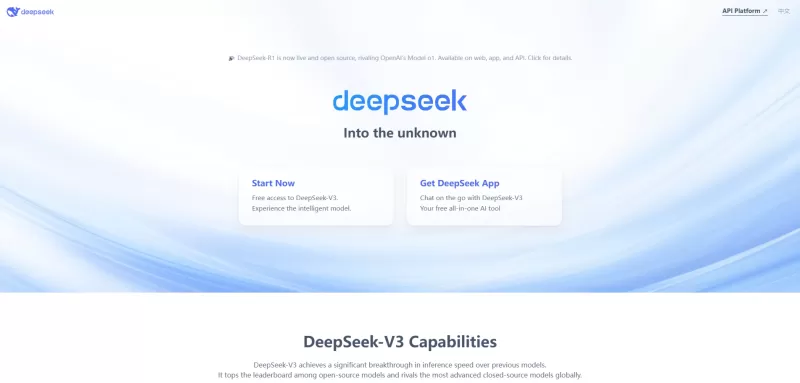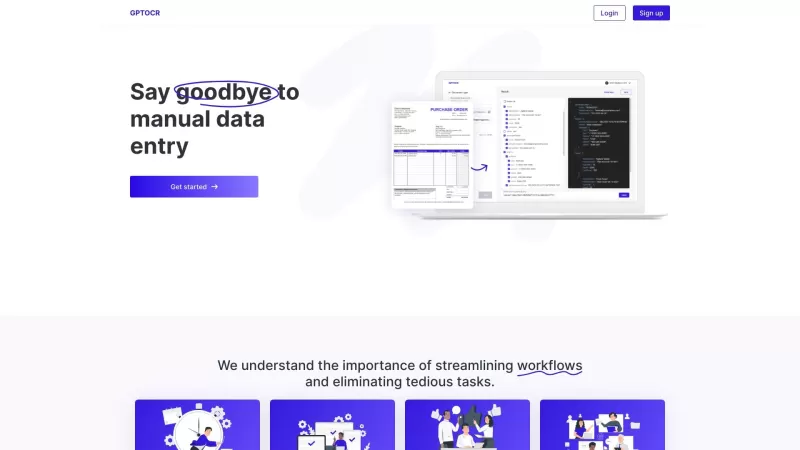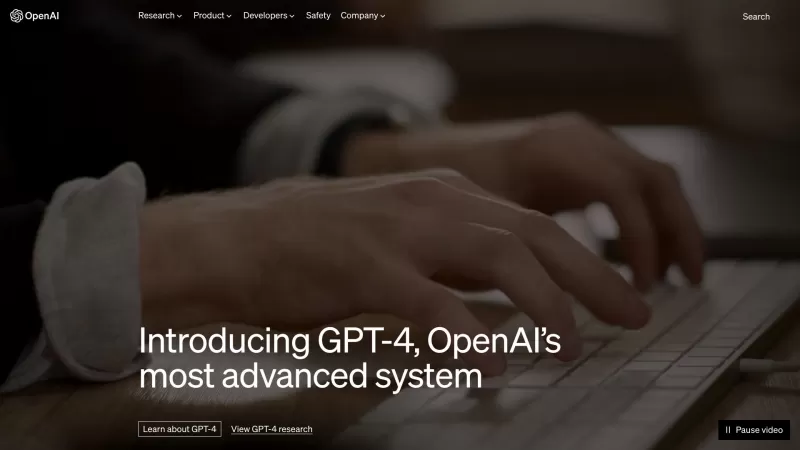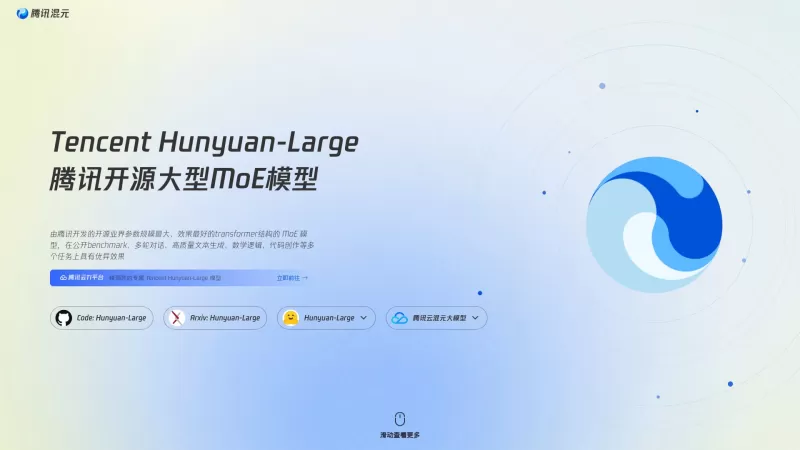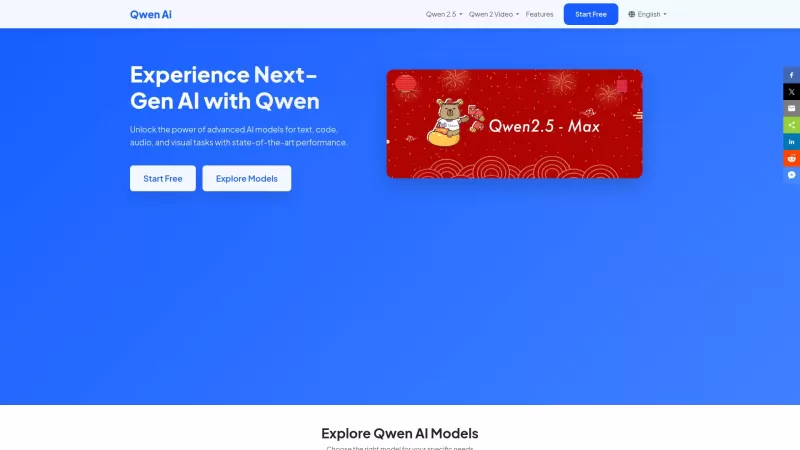AI's Coming Wave: How Artificial Intelligence Will Transform Humanity
We find ourselves at a historic inflection point where artificial intelligence is transitioning from emerging technology to foundational force. Mustafa Suleyman's 'The Coming Wave' offers both visionary insight and urgent warning about AI's growing influence across every dimension of human civilization. This review unpacks the book's central arguments while addressing the profound questions we must confront: How will society adapt to AI's total permeation? What safeguards can realistically contain its disruptive potential?
Core Insights
AI as Foundational Infrastructure: Analyzing how AI joins steam power and electricity as a civilization-defining technology class
The Containment Paradox: Exploring why controlling exponentially advancing technologies may prove impossible
Disrupting Traditional Authority: How AI redistributes capability from institutions to individuals at unprecedented scale
Employment Landscape Transformation: Evaluating whether this technological revolution differs fundamentally from prior industrial shifts
Moral Imperatives: Why ethical development frameworks are no longer optional in the AI era
Decoding AI's Civilizational Impact
AI as Civilization's Next Infrastructure Layer
Historical context reveals AI's extraordinary classification among humanity's most transformative innovations. Like metallurgy, printing presses and electrical grids before it, artificial intelligence represents a general-purpose technology—one of only about two dozen in recorded history that fundamentally reshapes how societies organize and operate.

What distinguishes AI is its unique capacity for recursive self-improvement and application across every economic sector simultaneously. Unlike previous advancements that revolutionized specific domains, AI systems display chameleonic adaptability—enhancing medical diagnostics today while optimizing logistics networks tomorrow. This universal utility combined with accelerating capability curves suggests we're not merely adopting another tool, but installing a new operating system for civilization itself.
Suleyman's analysis compels us to consider how foundational technologies historically create winners and losers. The Industrial Revolution's textile mills enriched factory owners while displacing artisan weavers. Similarly, AI's economic redistribution will likely prove both profound and uneven—necessitating thoughtful policy frameworks to smooth transitions and distribute benefits equitably across society.
The Unsolvable Containment Dilemma
'The Coming Wave' presents containment as the defining challenge of our technological age—how to regulate capabilities that become simultaneously more powerful and more accessible. This paradox intensifies with each passing year as cutting-edge AI techniques trickle down into open-source communities and commercial products.
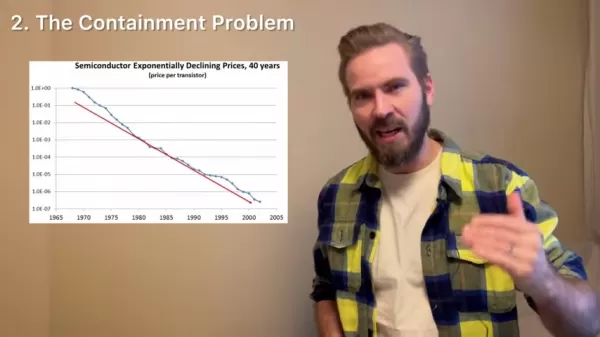
The book's most sobering revelation may be that traditional governance mechanisms are inherently mismatched to control technologies that:
- Require minimal infrastructure (a laptop suffices for many AI applications)
- Enable exponential capability growth (via algorithmic improvements rather than physical constraints)
- Generate irresistible competitive pressures (between corporations and nation-states)
Quantum computing illustrates this perfectly. Once practical quantum systems emerge, they'll break current encryption standards almost incidentally—not through targeted malice but simply by functioning as designed. Similarly, synthetic biology tools now allow garage laboratories to manipulate DNA sequences with precision that required billion-dollar facilities just decades prior. This democratization of destructive potential presents unprecedented governance challenges that existing institutions are ill-equipped to handle.
Power Diffusion in the Algorithmic Age
Suleyman's analysis of technology's equalizing effects carries profound implications for traditional power structures. Where industrial advancements concentrated capability within well-resourced organizations, digital technologies paradoxically distribute power while increasing its potency.

Consider how smartphones erased information asymmetries that previously favored elites. Today, an African farmer accesses weather data rivaling what meteorological agencies provided governments just years ago. AI accelerates this trend by placing capabilities like media generation, data analysis and even scientific research within reach of individuals and small groups.
This empowerment/disruption duality creates complex new challenges:
- The same generative AI that helps activists document human rights abuses could fabricate convincing disinformation
- Biohackers democratizing medical research might accidentally engineer hazardous organisms
- Autonomous systems reducing industrial accidents could enable new forms of automated warfare
Society must develop new resilience strategies recognizing that containment is increasingly implausible—focusing instead on rapid detection, response and adaptation frameworks for when (not if) technologies are misused.
Labor Market Earthquakes
Historical patterns of technological unemployment may offer false comfort in the AI era. While past innovations ultimately created more jobs than they destroyed, Suleyman questions whether this equilibrium will hold when machines can learn and adapt across the cognitive spectrum.
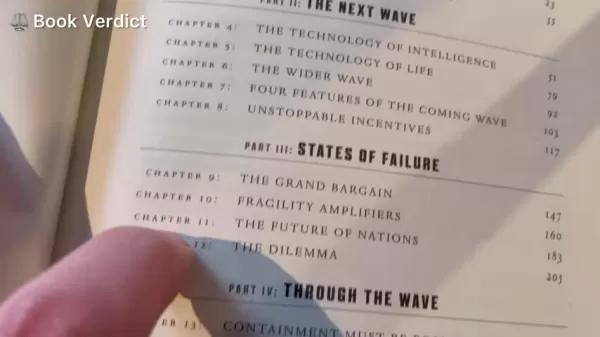
The creative industries provide a concerning preview. AI now handles concept art generation, procedural animation, code completion and synthetic voice acting—tasks spanning the creative/technical spectrum. Unlike industrial machines that replaced physical labor, these systems emulate human judgment and aesthetic sensibility. When creative differentiation (the traditional refuge from automation) becomes algorithmically reproducible, what professional domains remain uniquely human?
This economic recalibration may require reinventing social contracts around:
- Education systems emphasizing uniquely human capabilities (creativity, emotional intelligence, contextual reasoning)
- Alternative value distribution mechanisms (potential exploration of universal basic income models)
- Redefinitions of meaningful contribution beyond traditional employment
The transition promises to be turbulent as societies navigate shifting expectations around work, purpose and economic participation in an age of artificial general intelligence.
Personal Perspectives on AI's Ascendancy
Living Through the Transition
Beyond theoretical analysis, 'The Coming Wave' resonates because we're already experiencing precursor effects in daily life—AI curates our social feeds, filters job applications, and increasingly participates in creative collaborations. This tangible presence makes abstract futurism feel immediate and personal.
The book succeeds most when grounding its grand visions in concrete examples—whether describing how machine learning now predicts protein structures or how recommendation algorithms shape political discourse. These real-world touchpoints help readers comprehend the scope of changes that will soon affect every profession, institution and social convention.
Evaluating 'The Coming Wave'
Strengths
Comprehensive integration of technical, economic and sociological perspectives
Clear-eyed assessment of risks without descending into dystopian sensationalism
Actionable framework for anticipating and navigating coming disruptions
Limitations
Containment solutions may underestimate institutional inertia and competitive pressures
Some technological projections assume linear progression of current trends
Could further explore cultural adaptation strategies beyond governance frameworks
Central Themes and Structural Insights
Systemic Transformation
The book's greatest contribution lies in framing AI not as discrete tools but as societal infrastructure—the pipes and power lines of the digital age that will invisibly undergird every human endeavor. This systems perspective helps explain why incremental regulatory approaches may prove inadequate for challenges of this magnitude.
Foresight Methodology
Suleyman draws on his unique position spanning cutting-edge research and policy discussions to outline plausible developmental trajectories. His scenarios help differentiate between near-term certainties (like workforce disruptions) and longer-term uncertainties (such as artificial general intelligence emergence).
Moral Architecture
By presenting ethical dilemmas not as philosophical abstractions but as imminent design choices, the book makes moral reasoning feel urgently practical. The discussion compels technologists to consider how today's engineering decisions might constrain or enable future societal outcomes.
Intended Readership and Applications
Policy Architects
Provides conceptual models for designing adaptive governance frameworks to complement exponentially advancing technologies
Technology Architects
Offers ethical heuristics for engineering teams building increasingly autonomous systems
Concerned Citizens
Demystifies complex technological trajectories to inform personal and community preparedness strategies
Common Reader Questions
What distinguishes this book from other AI literature?
'The Coming Wave' uniquely integrates deep technical understanding with geopolitical analysis and historical perspective—connecting AI's development arc to broader patterns of technological diffusion and social change.
Who benefits from reading this work?
Anyone seeking comprehensive yet accessible understanding of how AI and synthetic biology will reshape economic, political and cultural systems in coming decades.
Why emphasize containment impossibility?
Recognizing containment's infeasibility focuses attention on more pragmatic strategies—building societal resilience, fail-safes and adaptation mechanisms rather than relying on unenforceable restrictions.
What hopeful perspectives emerge?
The book ultimately argues that while challenges appear daunting, human ingenuity applied cooperatively across disciplines can potentially steer these powerful technologies toward beneficial outcomes.
Recommended Complementary Reading
Expanding the Perspective
For those wishing to extend their exploration, consider Max Tegmark's 'Life 3.0' for deeper dives into AI consciousness scenarios or Nick Bostrom's 'Superintelligence' for rigorous analysis of control problems with advanced AI systems. Mo Gawdat's 'Scary Smart' offers accessible entry points for readers new to these discussions.
Related article
 Grok AI Sparks Controversy Over Controversial Simulation Desires
Elon Musk, the tech mogul who famously christened a government program after a cryptocurrency meme, architected an autonomous vehicle testing grid resembling male anatomy, and faced legal action over cannabis-related Tesla stock tweets, continues his
Grok AI Sparks Controversy Over Controversial Simulation Desires
Elon Musk, the tech mogul who famously christened a government program after a cryptocurrency meme, architected an autonomous vehicle testing grid resembling male anatomy, and faced legal action over cannabis-related Tesla stock tweets, continues his
 AI Chat With PDFs: Get Instant Insights Using Perplexity AI
Struggling with information overload in PDF documents? Perplexity AI revolutionizes document analysis with its cutting-edge feature that lets you converse with your files. This innovative tool provides instant answers to your specific questions while
AI Chat With PDFs: Get Instant Insights Using Perplexity AI
Struggling with information overload in PDF documents? Perplexity AI revolutionizes document analysis with its cutting-edge feature that lets you converse with your files. This innovative tool provides instant answers to your specific questions while
 Top 5 AI Media Kit Generators for Effective Branding in 2025
In today's digital-first world where first impressions matter more than ever, a professionally crafted media kit serves as your visual business card—showcasing your unique brand story to potential collaborators, sponsors, and partners. For digital cr
Comments (0)
0/200
Top 5 AI Media Kit Generators for Effective Branding in 2025
In today's digital-first world where first impressions matter more than ever, a professionally crafted media kit serves as your visual business card—showcasing your unique brand story to potential collaborators, sponsors, and partners. For digital cr
Comments (0)
0/200
We find ourselves at a historic inflection point where artificial intelligence is transitioning from emerging technology to foundational force. Mustafa Suleyman's 'The Coming Wave' offers both visionary insight and urgent warning about AI's growing influence across every dimension of human civilization. This review unpacks the book's central arguments while addressing the profound questions we must confront: How will society adapt to AI's total permeation? What safeguards can realistically contain its disruptive potential?
Core Insights
AI as Foundational Infrastructure: Analyzing how AI joins steam power and electricity as a civilization-defining technology class
The Containment Paradox: Exploring why controlling exponentially advancing technologies may prove impossible
Disrupting Traditional Authority: How AI redistributes capability from institutions to individuals at unprecedented scale
Employment Landscape Transformation: Evaluating whether this technological revolution differs fundamentally from prior industrial shifts
Moral Imperatives: Why ethical development frameworks are no longer optional in the AI era
Decoding AI's Civilizational Impact
AI as Civilization's Next Infrastructure Layer
Historical context reveals AI's extraordinary classification among humanity's most transformative innovations. Like metallurgy, printing presses and electrical grids before it, artificial intelligence represents a general-purpose technology—one of only about two dozen in recorded history that fundamentally reshapes how societies organize and operate.

What distinguishes AI is its unique capacity for recursive self-improvement and application across every economic sector simultaneously. Unlike previous advancements that revolutionized specific domains, AI systems display chameleonic adaptability—enhancing medical diagnostics today while optimizing logistics networks tomorrow. This universal utility combined with accelerating capability curves suggests we're not merely adopting another tool, but installing a new operating system for civilization itself.
Suleyman's analysis compels us to consider how foundational technologies historically create winners and losers. The Industrial Revolution's textile mills enriched factory owners while displacing artisan weavers. Similarly, AI's economic redistribution will likely prove both profound and uneven—necessitating thoughtful policy frameworks to smooth transitions and distribute benefits equitably across society.
The Unsolvable Containment Dilemma
'The Coming Wave' presents containment as the defining challenge of our technological age—how to regulate capabilities that become simultaneously more powerful and more accessible. This paradox intensifies with each passing year as cutting-edge AI techniques trickle down into open-source communities and commercial products.

The book's most sobering revelation may be that traditional governance mechanisms are inherently mismatched to control technologies that:
- Require minimal infrastructure (a laptop suffices for many AI applications)
- Enable exponential capability growth (via algorithmic improvements rather than physical constraints)
- Generate irresistible competitive pressures (between corporations and nation-states)
Quantum computing illustrates this perfectly. Once practical quantum systems emerge, they'll break current encryption standards almost incidentally—not through targeted malice but simply by functioning as designed. Similarly, synthetic biology tools now allow garage laboratories to manipulate DNA sequences with precision that required billion-dollar facilities just decades prior. This democratization of destructive potential presents unprecedented governance challenges that existing institutions are ill-equipped to handle.
Power Diffusion in the Algorithmic Age
Suleyman's analysis of technology's equalizing effects carries profound implications for traditional power structures. Where industrial advancements concentrated capability within well-resourced organizations, digital technologies paradoxically distribute power while increasing its potency.

Consider how smartphones erased information asymmetries that previously favored elites. Today, an African farmer accesses weather data rivaling what meteorological agencies provided governments just years ago. AI accelerates this trend by placing capabilities like media generation, data analysis and even scientific research within reach of individuals and small groups.
This empowerment/disruption duality creates complex new challenges:
- The same generative AI that helps activists document human rights abuses could fabricate convincing disinformation
- Biohackers democratizing medical research might accidentally engineer hazardous organisms
- Autonomous systems reducing industrial accidents could enable new forms of automated warfare
Society must develop new resilience strategies recognizing that containment is increasingly implausible—focusing instead on rapid detection, response and adaptation frameworks for when (not if) technologies are misused.
Labor Market Earthquakes
Historical patterns of technological unemployment may offer false comfort in the AI era. While past innovations ultimately created more jobs than they destroyed, Suleyman questions whether this equilibrium will hold when machines can learn and adapt across the cognitive spectrum.

The creative industries provide a concerning preview. AI now handles concept art generation, procedural animation, code completion and synthetic voice acting—tasks spanning the creative/technical spectrum. Unlike industrial machines that replaced physical labor, these systems emulate human judgment and aesthetic sensibility. When creative differentiation (the traditional refuge from automation) becomes algorithmically reproducible, what professional domains remain uniquely human?
This economic recalibration may require reinventing social contracts around:
- Education systems emphasizing uniquely human capabilities (creativity, emotional intelligence, contextual reasoning)
- Alternative value distribution mechanisms (potential exploration of universal basic income models)
- Redefinitions of meaningful contribution beyond traditional employment
The transition promises to be turbulent as societies navigate shifting expectations around work, purpose and economic participation in an age of artificial general intelligence.
Personal Perspectives on AI's Ascendancy
Living Through the Transition
Beyond theoretical analysis, 'The Coming Wave' resonates because we're already experiencing precursor effects in daily life—AI curates our social feeds, filters job applications, and increasingly participates in creative collaborations. This tangible presence makes abstract futurism feel immediate and personal.
The book succeeds most when grounding its grand visions in concrete examples—whether describing how machine learning now predicts protein structures or how recommendation algorithms shape political discourse. These real-world touchpoints help readers comprehend the scope of changes that will soon affect every profession, institution and social convention.
Evaluating 'The Coming Wave'
Strengths
Comprehensive integration of technical, economic and sociological perspectives
Clear-eyed assessment of risks without descending into dystopian sensationalism
Actionable framework for anticipating and navigating coming disruptions
Limitations
Containment solutions may underestimate institutional inertia and competitive pressures
Some technological projections assume linear progression of current trends
Could further explore cultural adaptation strategies beyond governance frameworks
Central Themes and Structural Insights
Systemic Transformation
The book's greatest contribution lies in framing AI not as discrete tools but as societal infrastructure—the pipes and power lines of the digital age that will invisibly undergird every human endeavor. This systems perspective helps explain why incremental regulatory approaches may prove inadequate for challenges of this magnitude.
Foresight Methodology
Suleyman draws on his unique position spanning cutting-edge research and policy discussions to outline plausible developmental trajectories. His scenarios help differentiate between near-term certainties (like workforce disruptions) and longer-term uncertainties (such as artificial general intelligence emergence).
Moral Architecture
By presenting ethical dilemmas not as philosophical abstractions but as imminent design choices, the book makes moral reasoning feel urgently practical. The discussion compels technologists to consider how today's engineering decisions might constrain or enable future societal outcomes.
Intended Readership and Applications
Policy Architects
Provides conceptual models for designing adaptive governance frameworks to complement exponentially advancing technologies
Technology Architects
Offers ethical heuristics for engineering teams building increasingly autonomous systems
Concerned Citizens
Demystifies complex technological trajectories to inform personal and community preparedness strategies
Common Reader Questions
What distinguishes this book from other AI literature?
'The Coming Wave' uniquely integrates deep technical understanding with geopolitical analysis and historical perspective—connecting AI's development arc to broader patterns of technological diffusion and social change.
Who benefits from reading this work?
Anyone seeking comprehensive yet accessible understanding of how AI and synthetic biology will reshape economic, political and cultural systems in coming decades.
Why emphasize containment impossibility?
Recognizing containment's infeasibility focuses attention on more pragmatic strategies—building societal resilience, fail-safes and adaptation mechanisms rather than relying on unenforceable restrictions.
What hopeful perspectives emerge?
The book ultimately argues that while challenges appear daunting, human ingenuity applied cooperatively across disciplines can potentially steer these powerful technologies toward beneficial outcomes.
Recommended Complementary Reading
Expanding the Perspective
For those wishing to extend their exploration, consider Max Tegmark's 'Life 3.0' for deeper dives into AI consciousness scenarios or Nick Bostrom's 'Superintelligence' for rigorous analysis of control problems with advanced AI systems. Mo Gawdat's 'Scary Smart' offers accessible entry points for readers new to these discussions.
 Grok AI Sparks Controversy Over Controversial Simulation Desires
Elon Musk, the tech mogul who famously christened a government program after a cryptocurrency meme, architected an autonomous vehicle testing grid resembling male anatomy, and faced legal action over cannabis-related Tesla stock tweets, continues his
Grok AI Sparks Controversy Over Controversial Simulation Desires
Elon Musk, the tech mogul who famously christened a government program after a cryptocurrency meme, architected an autonomous vehicle testing grid resembling male anatomy, and faced legal action over cannabis-related Tesla stock tweets, continues his
 AI Chat With PDFs: Get Instant Insights Using Perplexity AI
Struggling with information overload in PDF documents? Perplexity AI revolutionizes document analysis with its cutting-edge feature that lets you converse with your files. This innovative tool provides instant answers to your specific questions while
AI Chat With PDFs: Get Instant Insights Using Perplexity AI
Struggling with information overload in PDF documents? Perplexity AI revolutionizes document analysis with its cutting-edge feature that lets you converse with your files. This innovative tool provides instant answers to your specific questions while
 Top 5 AI Media Kit Generators for Effective Branding in 2025
In today's digital-first world where first impressions matter more than ever, a professionally crafted media kit serves as your visual business card—showcasing your unique brand story to potential collaborators, sponsors, and partners. For digital cr
Top 5 AI Media Kit Generators for Effective Branding in 2025
In today's digital-first world where first impressions matter more than ever, a professionally crafted media kit serves as your visual business card—showcasing your unique brand story to potential collaborators, sponsors, and partners. For digital cr



